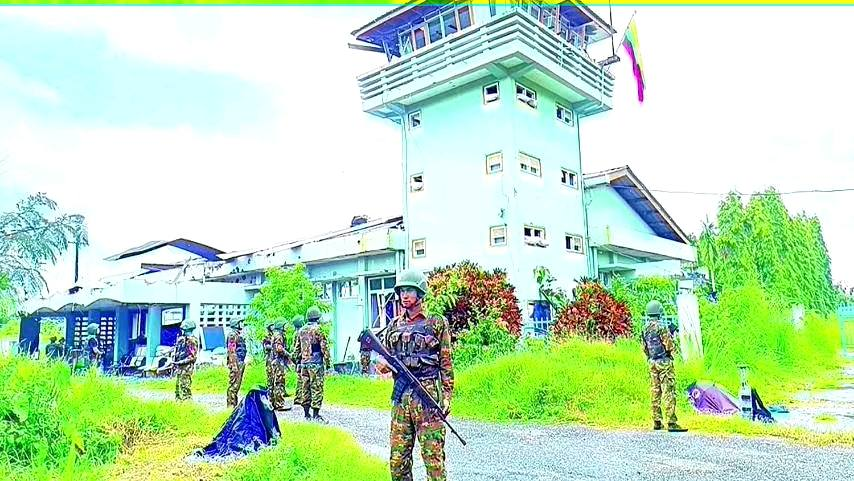Myanmar Spring Chronicle – September 15 View
(MoeMaKa) September 16, 2025)
The battle for Bhamo: still no clear winner—and what it may portend
Since December 2024, the Kachin Independence Army (KIA) and allied PDFs have been attacking to capture Bhamo and the military’s units based in and around the city—regiments, airfields, and the Military Operations Command No. 21 (MOC-21). More than eight months on, there is still no decisive result: positions have changed hands back and forth, with advances and withdrawals on both sides.
In the early months, the KIA and allies seized several regiments and airstrips and blockaded MOC-21, trying hard to take it. Early this year, to prevent MOC-21 from falling, junta forces used helicopter lifts, brought in supplies, and carried out air strikes to hold the line.
When the monsoon set in, the junta shifted from mainly air resupply to the Irrawaddy river. Using dozens of naval craft and transport boats, a convoy assembled in Mandalay reached Bhamo in July. Although the flotilla was harassed en route and a few boats were hit, most arrived at their destination.
After that, the situation around Bhamo changed. With replenished weapons, supplies, and manpower, junta troops retook some KIA-held positions in the city’s vicinity. In July, they said they had recaptured the Armored (Tank) Battalion and Light Infantry Battalion 236; KIA spokesperson Col. Naw Bu confirmed to one outlet that those posts had been lost.
Buoyed by this, the junta has pressed harder to fully retake Bhamo.
Over these eight-plus months, many homes, religious buildings, and offices in Bhamo have been destroyed. Unlike the arson that razed Htantlang in Chin State, much of the damage here has come from drone-dropped munitions and air strikes. As urban fighting has dragged on, the destruction has mounted.
The KIA likely did not expect the Bhamo battle to last this long. Before this, towns in Kachin Special Region (1) and places like Mansi were taken within weeks, not many months. But Bhamo—second only to Myitkyina in size, hosting MOC-21 and numerous other units—was always expected to offer tougher resistance. In practice, the longer the fight has gone on, the more not only the junta but also the resistance has faced growing difficulties.
On September 11, the junta issued an unusually detailed propaganda statement about the Bhamo fighting, claiming they had retaken certain bases as well as some wards and villages, and that more than 4,600 KIA/allied fighters had been killed in eight months. As in most wars, each side inflates the other’s losses, so few would accept the junta’s numbers at face value.
Even so, doubts have begun to surface about whether the KIA can ultimately achieve its objective of taking Bhamo.
Strategically, Bhamo matters to the KIA: it contains regimental bases and an operations command HQ, and—like Lashio—sits on a China-facing trade corridor. For those reasons, the KIA has poured in troops and ammunition. Psychologically, capturing the state’s second-largest city after earlier gains in smaller towns would be a major morale boost. Seen that way, after more than eight months they are unlikely to choose to pull back.
For the junta, the conscription law has enabled renewed manpower intake; armed-drone capabilities and related technologies have improved; and backing from China has grown—all of which put them in a position to launch counteroffensives.
From both a military and political perspective, the KIA will likely need to reassess the Bhamo campaign. Despite heavy losses on both sides, neither appears willing to withdraw; the outcome seems set to be decided by the balance of military strength on the ground.

